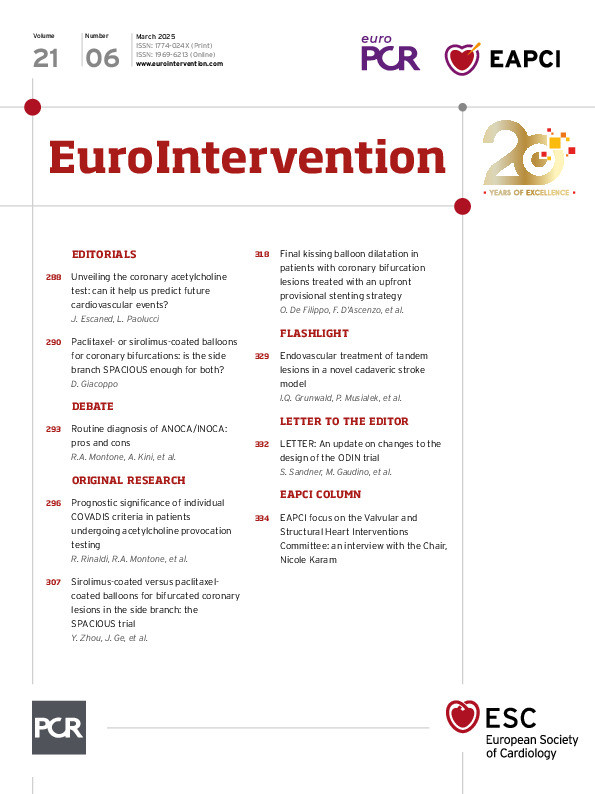In 2025, we have good reasons to consider acetylcholine (ACh) testing a part of the standard coronary diagnostic toolkit of our catheterisation laboratories. As shown by the AID-ANGIO study, vasomotor disorders are highly prevalent in patients with chronic coronary syndromes referred for coronary angiography1. Since vasomotor derangements cannot be reliably diagnosed with non-invasive methods, ACh testing performed at the time of diagnostic angiography can be decisive in reaching a diagnosis in patients who, otherwise, may stay trapped in a never-ending loop of unsuccessful tests2. Once a diagnosis is made, patient symptoms may be successfully addressed using drugs like calcium channel blockers and nitrates. All this justifies why clinical practice guidelines recommend its use as part of functional testing for ischaemia with non-obstructive coronary arteries (INOCA)2.
In interpreting patients’ responses to ACh, the most widely used approach is that recommended by the Coronary Vasomotor Disorders International Study Group (COVADIS)3, which uses three different criteria for test positivity: (1) development of chest pain with anginal characteristics, (2) ischaemic electrocardiogram (ECG) changes, and (3) epicardial spasm ≥90% during the test....
Sign up for free!
Join us for free and access thousands of articles from EuroIntervention, as well as presentations, videos, cases from PCRonline.com

